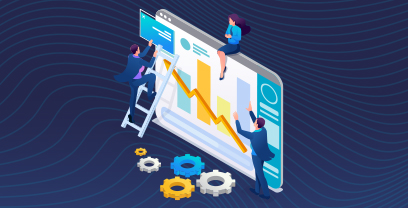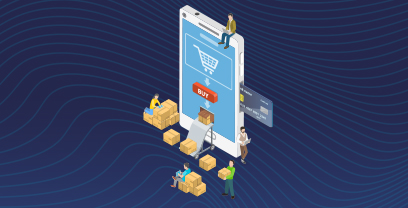|
The Forrester Wave™: Supplier Value Management Platforms, Q3 2024 See Report
Blog »
Ensuring a Successful Digital Transformation

At Ivalua NOW Paris, attendees gathered to hear valuable insights from a diverse group of experts who have experienced various stages of their transformation journey. Discover their testimony and the top tips they shared on measuring success, choosing the best strategy for starting a digital journey (S2C, P2P, SRM), practical solutions to accelerate technology adoption, and how to define the next steps in this transformative journey.
Panelists: Groupe ADP: Renaud Rebitz, Irish Distillers: Felicity McGrath , Michelin: Janel Longfellow, Stretch: Stefan Meller
1. Defining Digital Transformation Success:
Digital transformation has become a core focus for many organizations, and procurement is no exception. As businesses look to digitize their operations in order to increase efficiency and stay competitive in the global market, they should be thinking strategically about how digital transformation can best improve their procurement processes. In this session, we explored the benefits of digital transformation within procurement with key insights on what it means for modern businesses as well as some practical steps leaders can take to get started.
There are key factors that determine success: aligning with the needs of the industry/business/stakeholder, securing executive sponsorship and impacting key metrics. When it comes to measuring success, the absence of news is actually a positive indicator, particularly when considering the internal support team and their level of activity and the number of issues they handle. Additionally, we assess success by evaluating improvements in efficiency such as the time it takes to complete an order with a supplier, sourcing and contracting efficiency, supplier onboarding efficiency, etc.
While process efficiency metrics are the basis of success evaluation, you need to measure the employee experience as well. One easy way to start is to get the feedback from close teams (other buyers, for instance).
User perception and experience matter. At the beginning of the transformation journey with Ivalua, Buyers used to create RFPs in the system (just to satisfy their personal KPIs) but were not running them in the tool (they ran them offline, through emails).
The changes implemented involved improving communication and activity tracking, as well as making adjustments to the tool itself to better cater to their needs. These adjustments included the addition of new statuses to Request for Proposals (RFPs) such as “postponed” and “canceled”, a new field to indicate the reason for choosing a supplier, and the ability to retain data from an RFP that has been started but not completed, such as internal meetings with stakeholders.
Furthermore, the success of these changes is measured by the level of adoption. When the new processes become the norm within a short period of time and are no longer considered a major transformation, it is a clear indicator of their success.
2. Is there a best strategy to digitize? Is it better to start with S2C or with P2P? What are the criteria to take into account before starting a digital transformation ?
In the realm of procurement, there is no one-size-fits-all strategy that reigns supreme. The most effective approach depends on various factors, such as where you are in terms of procurement maturity and the specific context of your company.
For Michelin, our journey began with a focus on Spend & Contracts. This decision stemmed from our dissatisfaction with the previous tool we were using.
In the case of ADP, the impetus for change came from the need to comply with regulations pertaining to the bidding process, particularly in the realm of public tendering. Additionally, it made sense for us to start with Source-to-Contract (S2C) because in the procurement world, the decision-making power lies primarily with procurement. In contrast, Procure-to-Pay (P2P) involves a broader array of stakeholders, including Finance, Accounts Payable, and various users and stakeholders in the IT department.
Understanding the source of your purchases is now a prominent focus for CPOs and CEOs. As a result, the demand for Supplier Relationship Management (SRM) and Contract Lifecycle Management (CLM) tools is on the rise in digitization strategies. The implementation of Procure-to-Pay (P2P) digitization is frequently prompted by audit reports highlighting flaws in the current process. Additionally, a transformation strategy can involve digitizing existing operations, digitizing a new inventory management workflow, or adopting a novel approach to conducting business.
3. What was the main challenge of a transformation journey? How does one overcome it ?
Let’s take Irish Distillers as an procurement challenge example. Their main challenge was to educate the business about an efficient S2P process.They explained to the business that this project was a business transformation initiative, driven by Procurement yes, but not a Procurement transformation project. To convince the business, they involved all key functions from the beginning. They looked at the overall strategy with them, identified their own pain points and compared them to benchmarks and best practice. They continually ensured that they were understanding all the Business needs.
The second challenge they encountered was time. It was crucial not to underestimate the amount of time needed to handle the various complexities of their existing processes, streamline them, and get all departments on board. Despite having set an initial time frame for their goals, they ultimately chose to uphold their transformation ambitions and extend the timeline accordingly.
Next up: Michelin. Establishing trust and confidence among users was the initial hurdle at Michelin. Users were concerned about potential errors in their sourcing process, such as suppliers seeing other candidates in a request for proposal (RFP) or inadequate information segregation between users and suppliers. To build trust, we focused on educating users about the tool’s functionality and purpose. We placed emphasis on segmenting information and ensuring appropriate confidentiality levels, especially within communication messages and forms used in RFPs. Additionally, we reassured users that there was always someone available to address their questions and concerns. Moreover, they created a network of key users to facilitate knowledge-sharing.
Overall, to tackle adoption challenges, end users should always be included in the digitization project team. Otherwise, there is a fair risk of building something which is not user friendly. At ADP, they involved users at every step of the project (specifications, screen mockups, test & training) and regularly communicated with the rest of the user community.
It is crucial that user training is conducted by senior individuals as opposed to junior employees. This choice of trainers communicates the significance of the tool to the organization.
4. Does the digital transformation journey ever “end”? Or is it a continual process?
“Transformation” is a dangerous word because it leads to believing there is an end to the journey. But there is not– it is a continuous improvement process. Sometimes, people feel they are just a number behind a screen. You need a people-oriented strategy to support the project. You need resources, people in the project team to make it happen.
Contrary to a common belief, people are not adverse to change. But, to embrace changes, two conditions must be met: 1. Change must be seen as inevitable and 2. People need to see their interest in this change. The latter is what is often missing. The Chief Product Officer of AMETEK demonstrated to her team how the company’s digital transformation will enhance their skill development, increase their visibility within the organization, and boost their attractiveness to recruiters.
It can be challenging to make top management understand that the key to success is people. In order to bring about change within individuals, it is important to understand their unique needs. We recognize that not everyone has the same requirements, which is why we have adapted our offerings accordingly. Initially, we only offered a single RFP template on our platform. However, we have since expanded our options to include four different templates. This expansion has resulted in increased satisfaction among our users.
Business needs to continually evolve at pace, particularly in the digital space, however, you need to be careful to avoid “change fatigue”. You need to mark a clear start and end phase to a transformation to allow time to recognize and celebrate success and to take time to sit back and learn, before moving onto the next phase.
5. Deciding where to go next
When it comes to the next steps in the digitization journey, planning can be unpredictable. It hinges on various factors that arise during the planning process. For numerous clients, reducing carbon footprint has become the logical next step in their transformation, thanks to the introduction of Ivalua’s new Environmental Impact Center. In this situation, the editorial roadmap plays a significant role in shaping the digitization journey.
Referring back to a company’s strategic vision and ambition, they will need to continue to look for ways to improve upon procurement value add, aligning our supply chain with the business objectives. The next steps will be around sustainability and deepening true partnerships with suppliers – around accelerated innovation.
Key Takeaways
Moving forward, a company’s success depends on embracing the digital age and leveraging digital transformation to elevate expectations, refine processes and unlock new avenues of cost savings. Technology continues to provide us with a path toward improving existing operations while providing insights into futuristic ideas.
A company’s commitment to sustainable and long-term solutions will be essential if we are truly looking to create value within the supply chain. It is up to us to prioritize sustainability and innovation as we strive for a holistic approach that will benefit not only our organization but also our suppliers. By maintaining an effective balance between these two pillars, they can build out clear objectives, reliability, and scalability that creates an efficient value cycle from start to finish.
Where to start? Session Replay, Our Source-to-Pay Solution, Ivalua’s Environmental Impact Center , and Supplier Relationship Management (SRM).

Eloise Barnum
Senior Content Marketing Manager, Product Marketing
Eloise Barnum leads the Global Content initiatives for the EMEA and AMER Product Marketing team at Ivalua. With over 15 years of experience developing digital content and strategy solutions in Tech, SaaS, Public Sector, and Healthcare, she is currently collaborating across multiple marketing and communications teams to identify product marketing trends, produce relevant and engaging content, and develop plans for a cohesive cross-channel experience. A strategic product marketer with pointed focus, her skillset also includes email marketing optimization, sales enablement collateral development, and bylines for multiple thought leadership publications. Eloise graduated from Providence College with a dual degree in Finance and Political Science.
You may also connect with Eloise on LinkedIn


